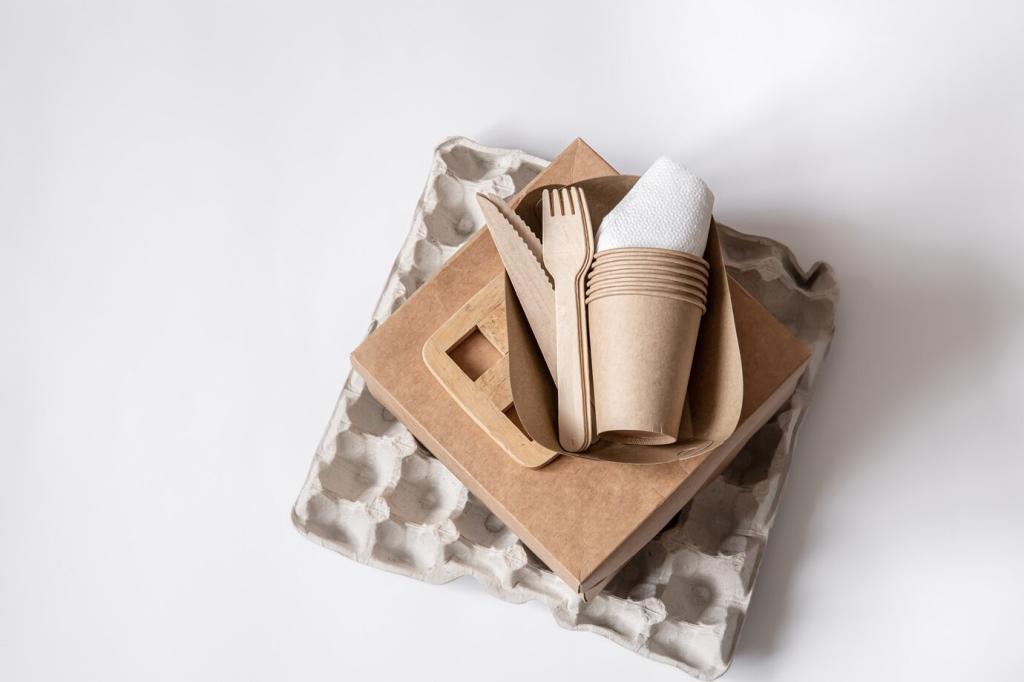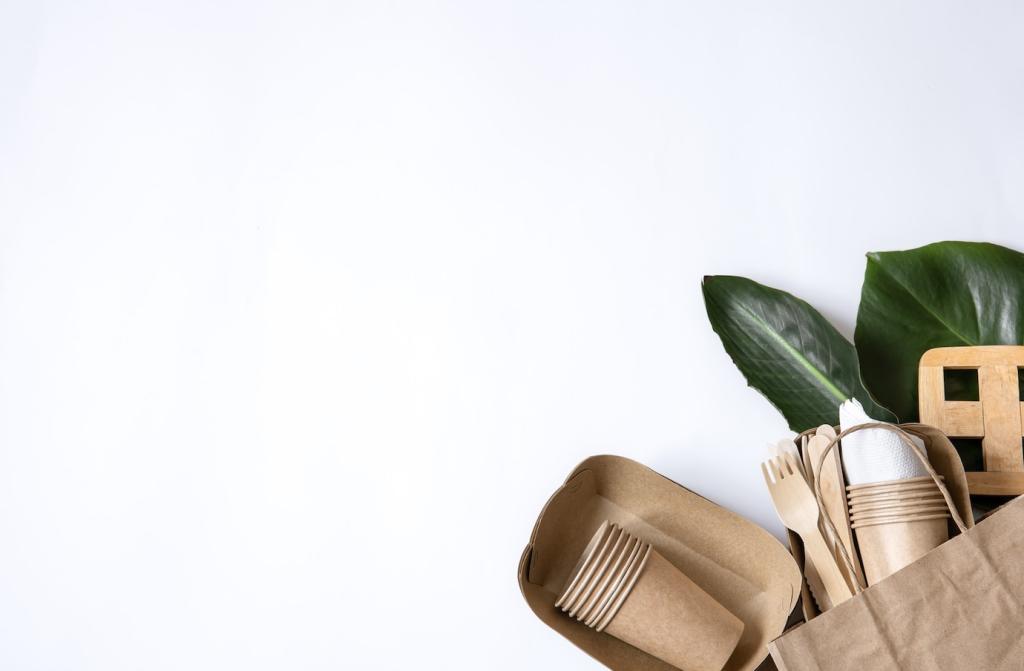Environmental Benefits of Biodegradable Packaging in E-commerce
Why Biodegradable Packaging Matters Now
Unlike conventional plastics that linger for centuries, many biodegradable materials are designed to return to nature under the right conditions. This reduces long-term pollution, conserves finite resources, and helps brands turn shipping into a more responsible, circular experience customers appreciate and talk about.
Why Biodegradable Packaging Matters Now
Microplastics threaten marine life and soil health. Choosing properly certified biodegradable packaging reduces persistent fragments, helping protect waterways, farms, and food chains. Invite your customers to share disposal habits and local compost access, and you’ll learn where education or alternative materials make the biggest difference.
Materials That Make a Difference
Compostable Mailers: PLA, PBAT, and Paper
Compostable films often blend PLA and PBAT; many require industrial composting to break down efficiently. Paper mailers, especially recycled or FSC-certified, are widely recyclable and sometimes compostable. Look for BPI or TÜV certifications, document your choices, and invite feedback from subscribers about local disposal options they rely on.
Mycelium and Agricultural Waste Foams
Grown from mushroom roots or crop byproducts, mycelium packaging protects fragile goods and composts under the right conditions. It replaces petroleum foams with a renewable, low-toxicity cushion. Ask readers: which products in your catalog could switch to mycelium without compromising protection during long-distance shipping or temperature swings?
Paper Honeycomb and Molded Pulp Cushioning
Paper honeycomb wrap and molded pulp inserts provide strong protection with recyclable, fiber-based materials. They are light, stack neatly, and reduce plastic reliance. Customers recognize them instantly as eco-friendly, which builds trust. Encourage followers to post photos of their unboxing to highlight responsible cushioning that still looks premium.
Implementing Biodegradable Packaging in Your Store
01
Start with Right-Sizing and Void Reduction
The greenest mailer is the one you shrink. Right-size boxes, switch to flatter mailers, and minimize void fill. These steps cut materials and emissions before choosing new substrates. Invite your team to run a weekly audit and share quick wins with our community for peer inspiration.
02
Certifications and Honest Claims
Use credible standards like BPI, TÜV OK compost INDUSTRIAL or HOME, and FSC for paper. Document where materials break down and under what conditions. Avoid vague claims and clearly label disposal guidance. Ask readers to suggest their favorite third-party certifications we should compare in a future deep-dive.
03
Educate Customers at Unboxing
Add simple icons and a QR code explaining disposal steps: recycle, compost, or reuse. Include local links where possible. A friendly message—“Your package treads lightly”—turns unboxing into environmental engagement. Encourage subscribers to comment with what messaging made disposal easiest for their families or offices.
Unboxing That Feels Good—and Does Good
Texture matters. Soft paper wraps, earthy tones, and clear eco instructions signal care. Customers sense authenticity when the materials match your sustainability story. Prompt readers to share photos or reels showing how biodegradable touches changed their unboxing experience and whether it influenced repeat purchases.
Interactive Disposal Guidance
A QR code can launch a postcode-based guide: compost facilities, curbside rules, and mail-back options for areas without infrastructure. This reduces confusion and contamination. Invite users to drop their region in the comments so we can build a crowd-sourced disposal map specific to biodegradable packaging.
Community Stories Drive Momentum
One small brand founder, Maya, replaced plastic bubble mailers with recycled paper and mycelium cushions. She noticed fewer damage complaints and more thank-you notes about thoughtful packaging. Share your story too—what swap earned the most customer love without sacrificing shipping performance or cost control?

Track What You Replace, Not Just What You Add
Record grams of plastic eliminated per order, mailer size reductions, and damage-rate trends. Pair operational metrics with customer sentiment from reviews and surveys. Ask readers which metrics persuaded their finance teams to support biodegradable upgrades across multiple product lines and seasonal peaks.

KPI Dashboard Examples
Useful KPIs include packaging weight per shipment, recycled content percentage, certified-compostable share, landfill diversion rate, and transportation emissions per order. Publish quarterly updates to build trust. Subscribe for our template that turns raw warehouse data into clear, sharable sustainability snapshots.

Lifecycle Assessment Basics Without the Jargon
An LCA compares impacts from raw materials through end-of-life. Even a streamlined version highlights hotspots like resin sourcing or excess void fill. Share how your findings guided material swaps, and comment if you want us to feature a beginner’s LCA worksheet in an upcoming post.
Know Your Markets: EPR and Labeling Rules
Extended Producer Responsibility laws and labeling standards vary by region. Incorrect claims can lead to fines or mistrust. Keep a compliance spreadsheet by destination market and product type. Ask readers which regions feel most confusing so we can prioritize a country-by-country guide next.
Partnering with Carriers and Fulfillment Centers
Share packaging specs with carriers to ensure scanner readability, weather resistance, and stacking strength. Train fulfillment teams on new materials and proper sealing. Invite operations leaders to comment with their best tips for preventing compostable mailers from tearing during conveyor handling.
Claims You Should Avoid
Steer clear of ambiguous phrases like “eco-friendly” without proof. Be cautious with oxo-degradable additives, which can fragment rather than truly biodegrade. Ask your suppliers for test data. Subscribe for our checklist of safe claims and phrasing aligned with current advertising standards.


What’s Next: Innovation and Reuse Hybrids
Emerging films use rapidly renewable feedstocks with promising end-of-life profiles. They are not one-size-fits-all, but they expand options beyond petroleum-based plastics. Tell us which product categories you want tested with these films, and we’ll prioritize pilot reports and share results with subscribers.
What’s Next: Innovation and Reuse Hybrids
For repeat customers, reusable mailers can slash waste, with compostable backups for exceptions. Hybrid systems require smart tracking and clear instructions. Comment if you’ve tried a returnable mailer program and whether incentives or reminders worked better to achieve high return rates.
